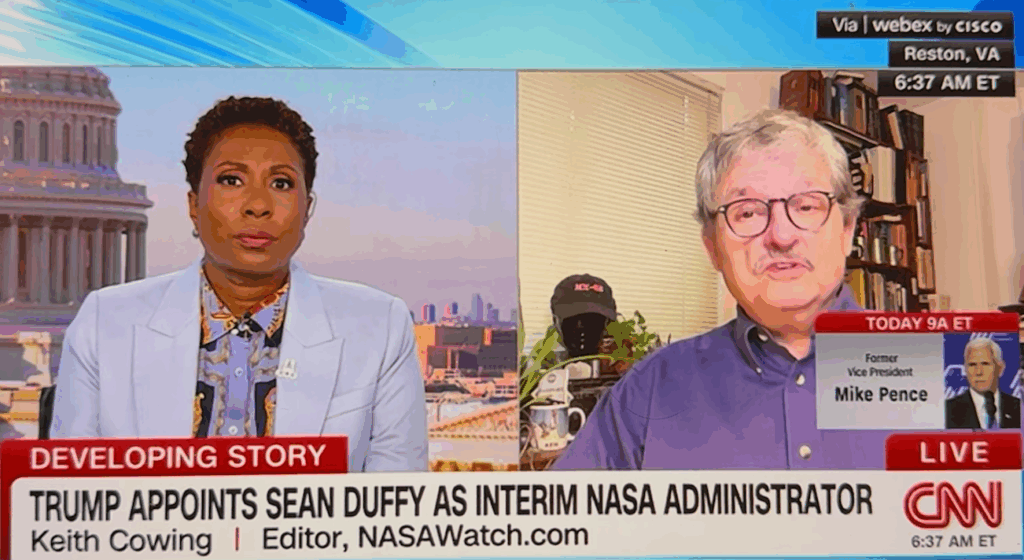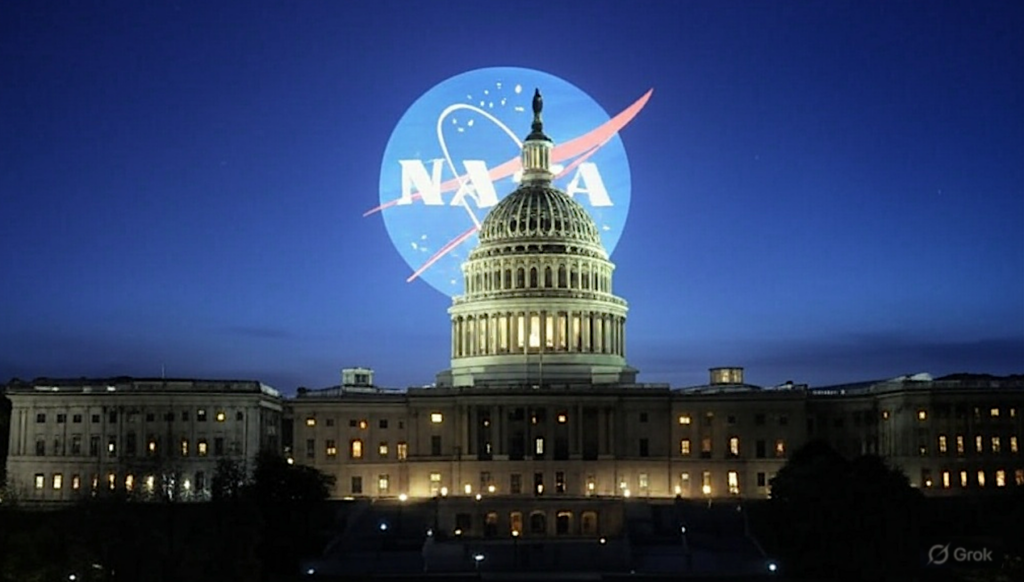Rallying The Troops and Lowering Expectations
 Note from James Green, Director Planetary Science, NASA on Mars Curiosity Rover Landing
Note from James Green, Director Planetary Science, NASA on Mars Curiosity Rover Landing
“One week from today, our community will be forever changed, one way or the other, no matter what. The landing of the Mars Curiosity Rover at Gale Crater occurs at 1:31 AM (Eastern Time) and it will be a history event. Curiosity is our latest flagship mission and it demands all of our attention. This feat represents the most difficult entry, descent, and landing (what is known as EDL) of a planetary science rover ever attempted, anywhere. As you may already know, the historical success rate at the planet Mars is only 40%. Although our landing percentage odds are higher (100%), successful landing with an unproven, next generation, landing system…well, that will be a white-knuckle- experience to say the least.”









Lowering expectations? Hardly. Statistics are what they are, and nothing has changed. This is a hard mission. The recent “Seven Minutes of Terror” video, which has gone viral, put it well, right at the end. “Dare mighty things”. Our expectation is just that, and always has been. We may succeed and we may fail, but we’re daring mighty things. That’s what we’re about.
I believe I found a typo in the statement. He said “latest flagship mission”. Should have said “last” because there should be no Flagship level follow up the the two billion dollar rover which shouldn’t exist.
Oh, I imagine there will be more missions, if, and that’s a big IF, Curiosity is successfull. There is nothing like success that makes congress want to keep the budget rolling. Unless the mission was Apollo. 🙁
Someday someone will explain how launching one two billion dollar nuclear powered mega rover to one site makes more sense than sending four or so upgraded-MER $500 million rovers to four separate sites. Is our knowledge about Mars is so good now, it makes more sense to probe one single site deeply, than cast a wide net and compare and contrast the history of four different sites at different lattitudes across the planet? Because the MSL no matter what it finds isn’t going to give an equivocal answer on “life” because for some reason, including a “life detection” package keeps getting kicked to the next rover.
As suppose the never ending quest for life on Mars is the NASA project Manager’s gift that keeps on giving. I also find it rather interesting that solar-powered Opprotunity has lasted as long as the MSL is supposed to last. Maybe next time instead of blowing hundreds of billions of nuclear power for something that really doesn’t need it, they’ll put on solar panels with “windshield wipers” to push the dust off. Believe me, I love nuclear space. But on a Mars Rover? It’s that overloaded with tools?I’m sure the MSL (refuse to call it the infantile Curiosity”) will do great science… but this building of a new design from a clean sheet every time NASA needs a new rover, satellite, space probe, space telescope or whatever… needs to stop. It’s not only unnecessary, its expensive and no one else does it. Remember those two Hubble-class telescopes NASA got for free earlier in the year? They acted like they didn’t want them, because *gasp*, they can’t have a Flagship-level Space Telescope that isn’t the JWST, that, oh by the way, is another agency’s leftovers. Catastrophes like the JWST and the MSL make me glad I went into computer science, where the first thing they teach you, month one of programming class, is document your code so that when you reuse it, even years later, like you should, you know how it works.
No matter the science they return, they are still epic project management failures. The rover with the $700 million “taint issue” and the Space telescope $7 billion over budget and 10 years behind schedule should not exist and the people responsible for such failures should never work in the space industry again.
That too is how it works, pretty much everywhere else.
I would love to see more MER-size rovers dotting Mars and the moon. There’s at least one big risk of multiple smaller missions, though: it gives Congressional committees more targets for cancellation. This already happened with the ambitious New Millennium program that included over a dozen relatively inexpensive missions to try new concepts in spacecraft. Less than half survived cancellation. But the ones that did, like the comically cheap Deep Space 1, gave us new technologies that we’ve already turned around and built on in later missions like New Horizons and Dawn.
I’m not sure what leads you to believe MSL is going to end up investigating only one site, however. Just like the MERs, it’s pretty likely to receive mission extensions if it continues to operate. Its size also has advantages. Yes, it really does have quite a bit more instrumentation than the MERs, and being twice as tall with a power source almost four times stronger means it can navigate terrain the MERs couldn’t get near, and could cover quite a bit more distance. Remember, the JPL guys aren’t big on overestimating the lifetime of these rovers, so it’s not too useful to compare MSL’s expected range & lifetime to the MERs longevity.
As for the NRO’s Hubble-type telescopes, it’s not like they’re sitting in a crate ready to stick on top of a rocket. They need instrumentation and development that they simply don’t have a budget for. Implying they don’t want them is pretty ridiculous, of course they want them. But where’s the money? Congress certainly isn’t going to increase their budget just because they have two half-built space telescopes.
JWST is obviously far over budget, but we’re also talking about an unprecedented increase in capabilities. I would much rather see it succeed than be cancelled. Imagine if Hubble — which took over 10 years to complete and was also substantially over budget — was cancelled. Its huge impact on the public consciousness would’ve been lost, even ignoring its scientific significance. These are the kinds of projects that capture people’s imaginations and turn kids into engineers and scientists.
JWST may redefine the universe for us. IF the darn thing works.
Is our knowledge about Mars is so good now, it makes more sense to probe
one single site deeply, than cast a wide net and compare and contrast
the history of four different sites at different lattitudes across the
planet?
Frankly, the answer is … yes.
Largely as a result of our past Mars missions, we now have a vastly better handle on what the specific questions are that need to be answered. Armed with those questions, we can go search for the martian where there is the best chance of answering them. Gale Crater is it.
As to comparing and contrasting at widely different locates, on-orbit recon satellites provide a lot of meat, and at vastly more than four locations. (Why four?)
I hope your rover with windshield wipers has the ability to work at night (which MSL does), and has the power for advanced autonomy (which MSL does). You design a new rover to do new things. You gain confidence with each build, effecting more advanced capabilities. I mean, why aren’t we still driving Model Ts?
As to HST, nope, astronomers largely don’t want another one. Why? Because the scientific gold nuggets available to the first one have been picked up. It’s time to reach deeper. The comparison to computer science and programming is amusing. If your programming languages and operating systems stay the same, then faithful preservation and reuse of code is of primary importance. It isn’t that way for science.
As budgetarily catastrophic as MSL and JWST have been, in doing them, we’ve learned a lot. Including how we should have done them better. As I said above, this is about daring mighty things. Building copies doesn’t dare mighty things.
There seems to me to be a problem when we lose track, a sense of what is important. All the “mighty things” that might be attempted, depend greatly on “copies”. As I said above, we need a little less of the high verbiage and more on getting work done, even if by copies.
What we want from NASA is cutting edge technology and science. Besides the jobs that is what this all about.
Ralply999
What we want from NASA is cutting edge technology and science that can act as a prototype or test to create and test ideas and systems that can be easliy be produced to provide more capablity and lower future costs. Besides the jobs that is what this all about.
“(Why four?)”
Maths. $2b MSL budget, divided by MER’s $500m per-rover budget.
(Although I suspect that having two rovers didn’t double the cost, therefore you’d get more than four MER rovers for $2b. Likewise, having two MSL rovers wouldn’t have cost $4b. (Assuming there was enough plutonium.) Most of the cost is designing and tooling up for the first one.)
“As to HST, nope, astronomers largely don’t want another one.”
Tell that to the astronomers who fought like wildcats to keep the current one flying a few years longer.
“As I said above, this is about daring mighty things. Building copies doesn’t dare mighty things.”
And this mythology is why NASA is in so much trouble.
2 plus 2 is 4 lolololol
NASA cost plus math!!!!
According to Astronomy magazine August 2012 issue page 24, solar panels cannot supply ehough energy for the one ton vehicle.
” our landing percentage odds are higher (100%)”
Your landing percentage on Mars is NOT a 100%. Someone has conveniently forgotten crashing the Mars Polar Lander in 1999.
MCO crashed into Mars – so they hit the planet even when then had not intended to.
So, Keith, that’s an “unsuccessful landing”? Or a “Landing without successful science”?
Grin, true, which brings the %age back up to 100%!
Or in other words already spoken by President John F. Kennedy: “We choose to go to the moon. We choose to go to the moon in this decade AND DO THE OTHER THINGS, NOT BECAUSE THEY ARE EASY, BUT BECAUSE THEY ARE HARD, because that goal will serve to organize and measure the best of our energies and skills,
because that challenge is one that we are willing to accept, one we are unwilling to postpone, and one which we intend to win,
and the others, too.” Rice Unuversity, Sept. 12, 1962. This is the NASA that I signed up for. Fare forward, Curiosity.
Yes! This needs to be the first point – the Rice speech, in comment to MSL’s journey. NASA has had many nail biters to say the least. We have in very unfortunate ways, lost astronauts. But consider as an equal and more so, the bravery of Crippen and Young strapped into Columbia on its maiden voyage. An unproven system of many subsystems. First flight of all components, had to work the first time. They sat in ejection seats, the minimum on board and had maybe a 30 second window in which those seat might have saved them. Remember Crippen and Young in the Shuttle’s maiden flight. And in 5 days, hold your breadth and hope for the best. I am optimistic that MSL EDL will be a success.
I don’t see this as lowering expectations, but a realistic assessment. Anybody who’s familiar with the success rate of Mars probes realizes it’s a really tough challenge. And let’s not forget that most people aren’t familiar with that – they actually think that some movie sci-fi is real. You know, like landing on an Earth-bound killer asteroid is work for oil rig drillers using minimal training? So maybe this is a good idea to be a little sober just before the attempt.
This is all non-sense. All the high verbiage means nothing. The Kennedy speech was “the Kennedy” speech. We need a new one. One-off, “unbelievably complex” systems, a term that has been used to describe MSL do not serve. “Hard” and “unbelievably complex” are typically not good sales pitches. We need lower complexity, “good” performer, “many-offs”, regardless of target; Moon, Mars, Asteroids
For Engineers this is the ultimate guts and glory event, designing, building, programming, testing, retesting something that is going to land by itself 14 minutes light time away. I am in total awe every time they successfully pull one of these landings off. I’ll be watching with white knuckles, fingers and toes crossed from PlanetFest in Pasadena Sunday night.
Someone please remind us exactly why this novel cable landing scheme is being used, rather than a rocket landing?
?????????
The plan is to hover with rockets and winch the rover down to the surface. Why not just land on rockets and drive the rover off the lander? Why the added complication of the winch system?
They don’t want dirt, dust, and other debris kicked up onto the rover right off the bat. They want it to arrive pristine on an undisturbed, uncratered surface.
Please read the following interview with Steve Sell an engineer who works for JPL. Thanks, Ralphy .
http://www.popularmechanics…
Thanks. Here’s hoping that some dynamic interaction between flexible tether and propulsion system doesn’t kill it.
because they are concerned that landing with a single engine or even grouped engines would 1. sandblast the rover on its way down and 2. blast a crater so deep that the rover couldn’t get out of. They are trying to keep the rockets up far enough so as to not heavily crater.
“Sandblasting”? It’s a wonder that the Vikings survived their landings; see, there’s these things called “covers”… The “blast a crater so deep that the rover couldn’t crawl out” theory is silly. I’ll send a dollar to the first person who can reference that to a JPL source. Finally, as for wanting a pristine surface: it’s a rover. It’s purpose is to drive to any number of pristine surfaces. If that is the correct explanation the designers have traded the risk that the rover won’t rove for the risks of the winch system. Yikes.
I think they wanted to avoid having to drive off of a lander. With the Sky Crane the rover is the lander with it’s wheels replacing landing pads. The Crane has just what it needs to slow the descent to landing velocity, nothing more. If there were a lander under the rover, the total package would be somewhat bigger and heavier. Don’t forget that MER had a tether under retro rockets.
I have thought about putting wheels on dragons before only to be told you don’t want all that extra weight.
What if you had a wheeled vehicle like a dragon with wheels make a landing on its legs. Then the wheels fold down then once safely on the ground the top of the lander draco hops off to leave the rover/ wheeled part there. Wouldn’t that be simpliar and safer than a skycrane????
You could even drive arould with the top for a while doing one part of the mission and then do different mission once the top has hopped of and landed near by.
lol skycrane with legs shaped like a Dragon cone.
Get and old dragon cots capsule and make the drop off heat sheild, then cutout the floor and make the rover body out of the dragon floor its self lol kidding but not really.
Are deep blast craters really a problem??
how heavy a rover could a dragon land on mars if you added foldout heat sheilds plus a big parachute.
and create a mars lander standard???
I give MSL about a 20% chance of a successful landing.
The string of recent successes we’ve had with Mars has led to arrogance. It was a mistake to put so many eggs in one basket. The basket became expensive, complex, and heavy. That led to the overly-complex landing scheme.
All those “dare mighty things” and “because they are hard” quotes are tragically misguided. Difficult *goals* are good. Choosing the difficult *path* to reach those goals is bad. MSL is the difficult, expensive path to the scientific goals of the mission.